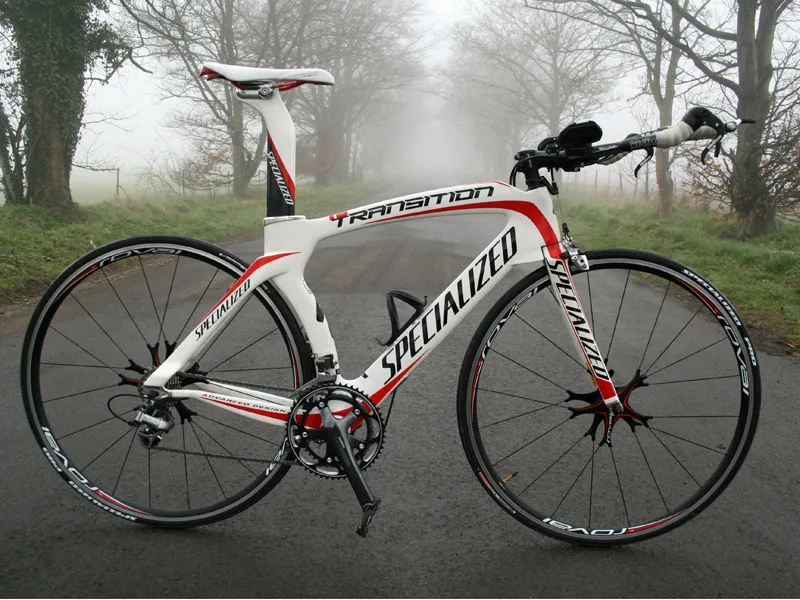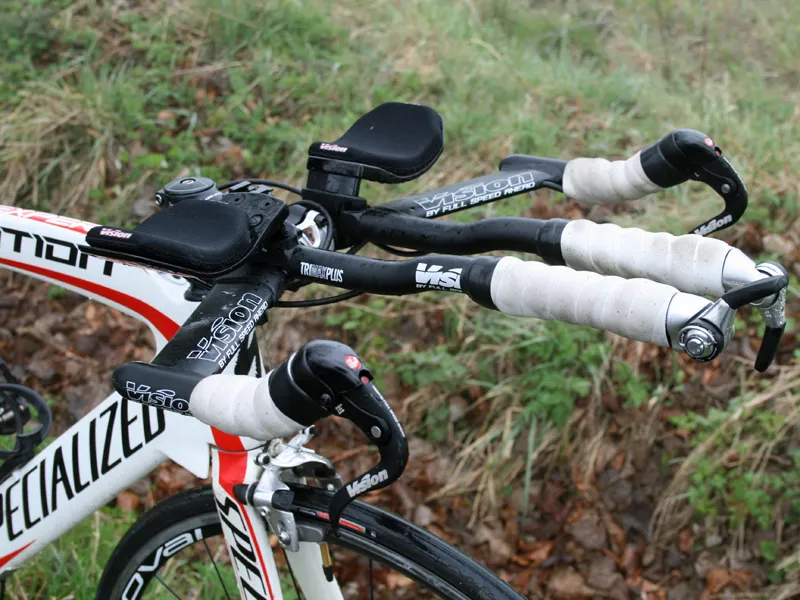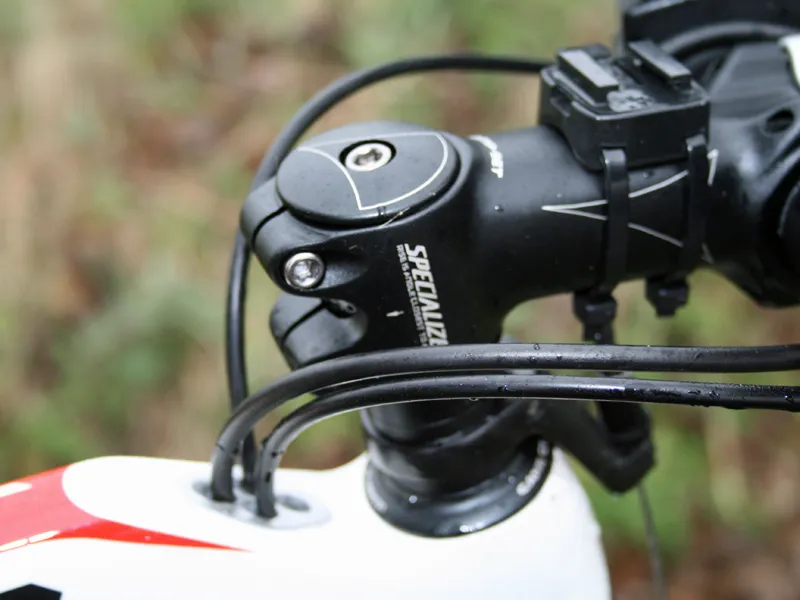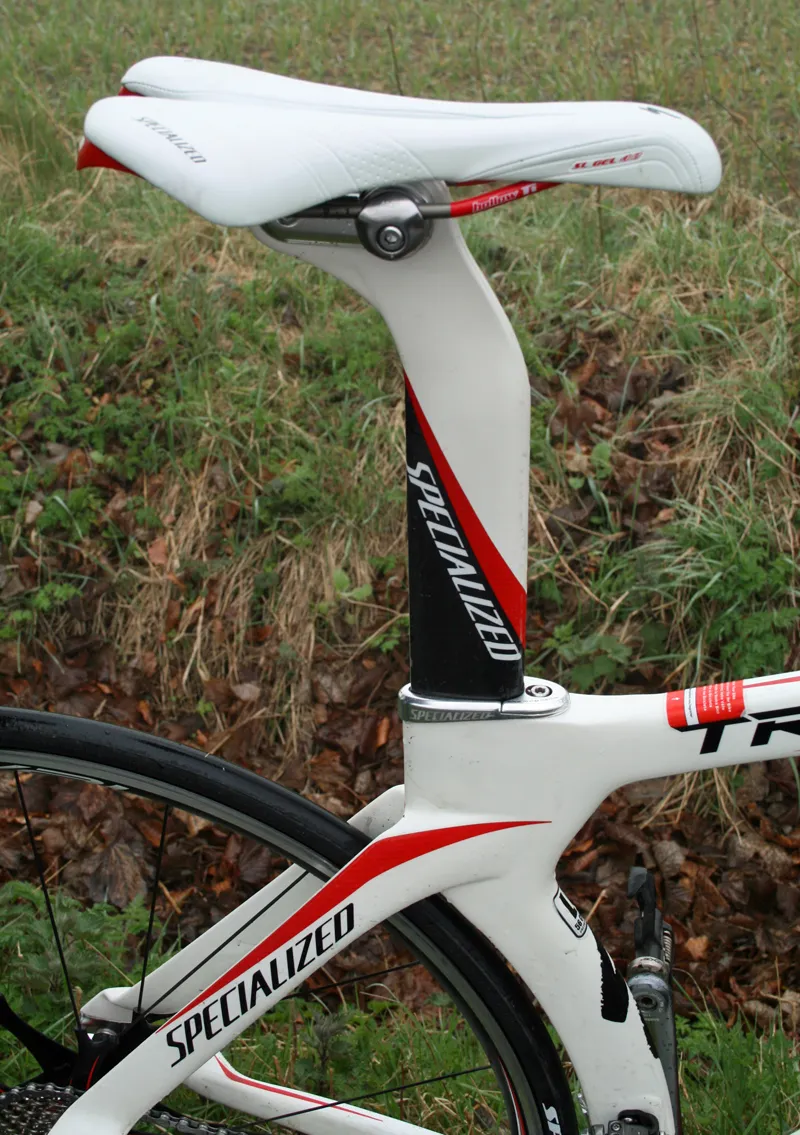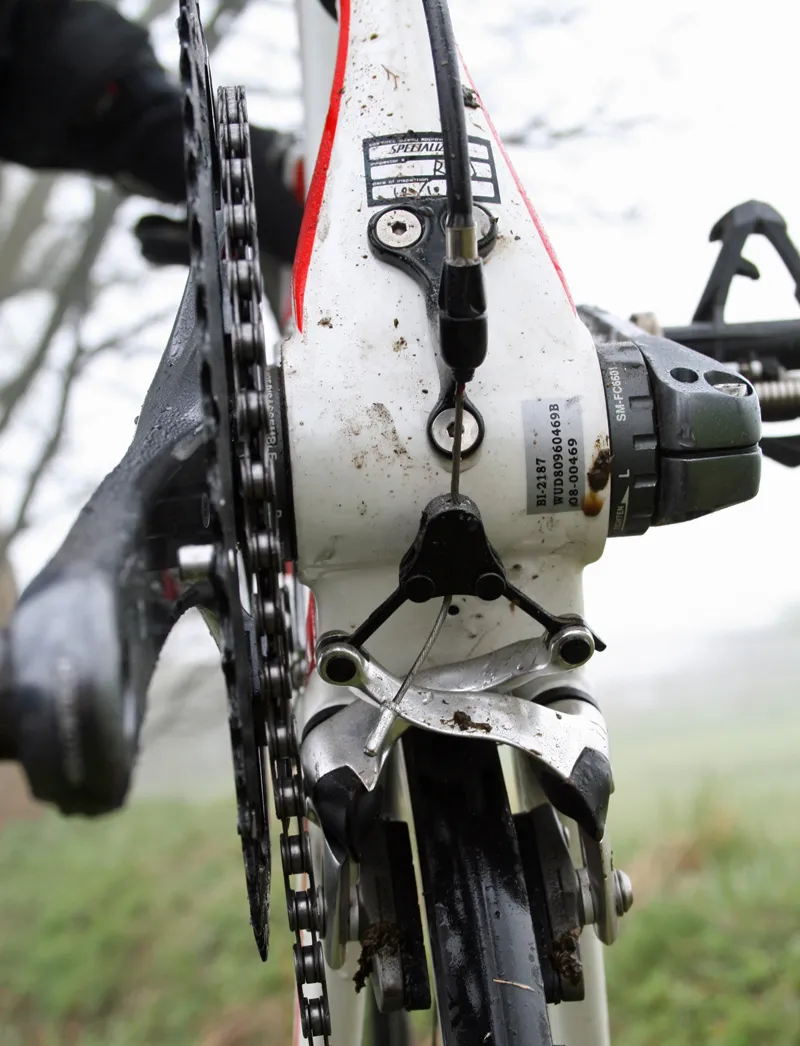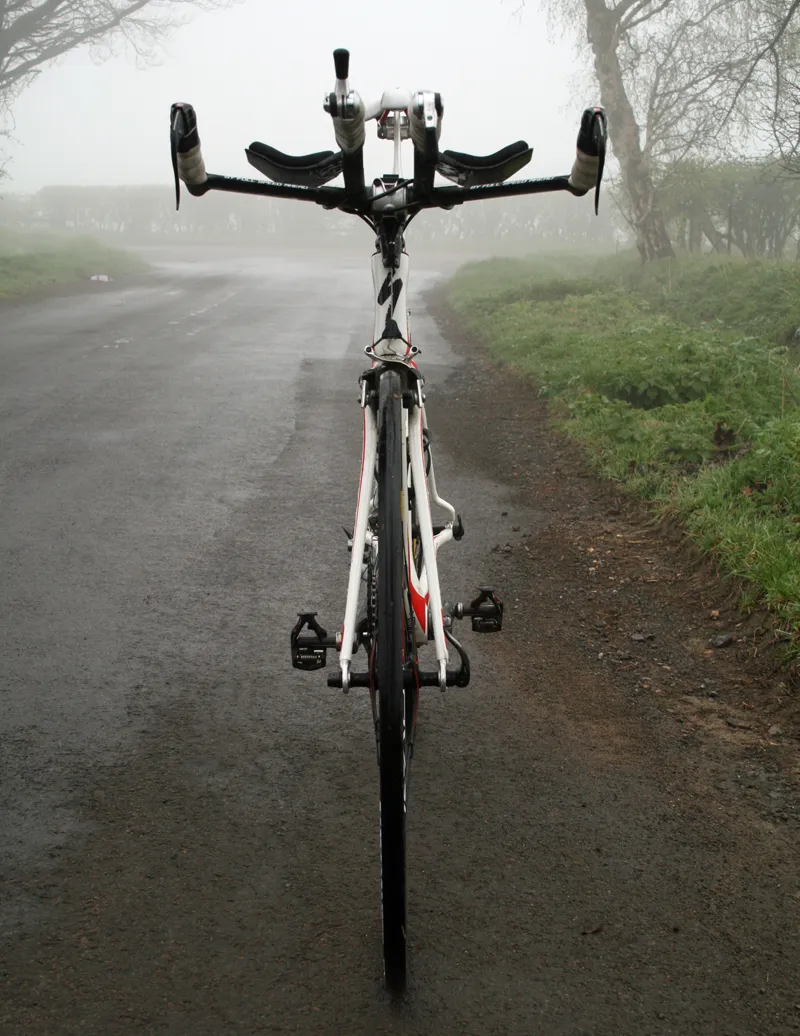Specialized's Transition Expert sits second from bottom in their time trial bike range. While it's by no means cheap, if you're serious about racing against the clock, it's well worth considering.
It's aero, it handles well and it's not hugely expensive. On the downside it's a little heavy and is let down by poor wheels that beg to be upgraded to something stiffer. Without that change you'll never realise the full potential of this well designed speed machine.
Ride & handling: Fast and smooth
Time trial bikes are primarily built for speed, and the Transition Expert fits this bill well. You've still got to provide the horsepower but the bike will help you cut through the air better than most.
It may not be as sleek as Specialized's new Shiv (which has yet to make it to full production stage) or some of the other top framesets out there, but it performed very well for us on all types of courses.
How well? Would you believe a 30-40 second improvement on our club 10-mile time trial course for, on average, 20w less power than our previous time trial bike? We tested it using the same course under similar conditions, and the same wheels, tyres, kit and helmet – only the frame, bars and the position changed.
Big drag savings like this are likely mostly down to position, not frame aerodynamics, and they're an individual thing. But there is no doubt the bike helped us achieve them.
A bigger drop between the saddle and the stem in order to lower the head and shoulders, narrower elbow pad settings on the bars, a compact frame that allowed us to pedal knees-in – it's all important.
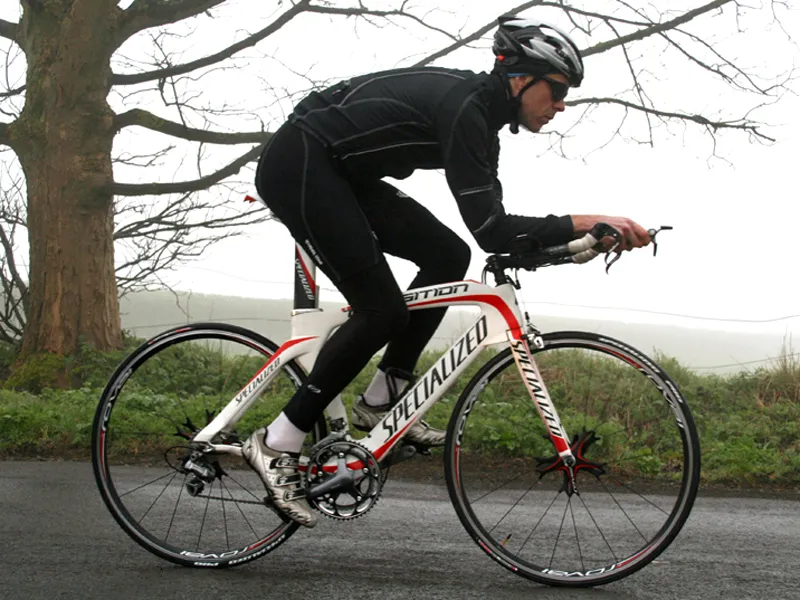
We liked the position and handling
The Transition is equally as good on the handling front. Having a bike that will go fast in a straight line is all very well, but sooner or later you're bound to come across a corner, and you certainly don't want to be doing any wrestling with your machine in order to negotiate it at speed.
An extreme example: the team relay bike leg of the London Triathlon contained over 70 U-turns, roundabouts and bends in just 40km! We put the Transition Expert to the test on the course and were impressed at how well it behaved (and we were using a rear disk wheel).
The frame, coupled with Vision Trimax Plus SI bars, took everything calmly in its stride. Result: we posted the fastest bike split by two-and-a-half minutes.
The main complaint we had about the bike is that it's on the heavy side – 8.92kg (19.7lb) for our Large (56cm) model. While this doesn't seem to affect the handling, it does make climbing a little harder.
It's a small effect, though, and it's only a handicap on climbs with 10 percent gradients or more. On shallower grades, the bike's aerodynamic advantage is more than enough to overcome the weight disadvantage compared to, say, a lighter road bike.
We also noticed a little quirkiness in the handling in strong crosswinds. Because the frame presents a relatively large area side-on, it acts a little like a sail in a crosswind. The first time this happened, we thought we'd punctured as the rear wheel felt spongy. But this wasn't the case – it was just an effect of the wind.
Frame: Well thought out and very slippery
The FACT 7rN'Aero carbon monocoque frame (to give it its full name) is the heart of the Transition Expert. The entire Transition range, from the S-Works down to the Comp, uses the same shape and geometry.
That means the Expert is just as aero as an S-Works, just not quite as light or stiff.
There are lots of things we liked about the frameset. The 1in steerer tube and cantilever front brake combined with the bladed fork make for a slim frontal profile – exactly what you want when you're trying to push as little air out of the way as possible.
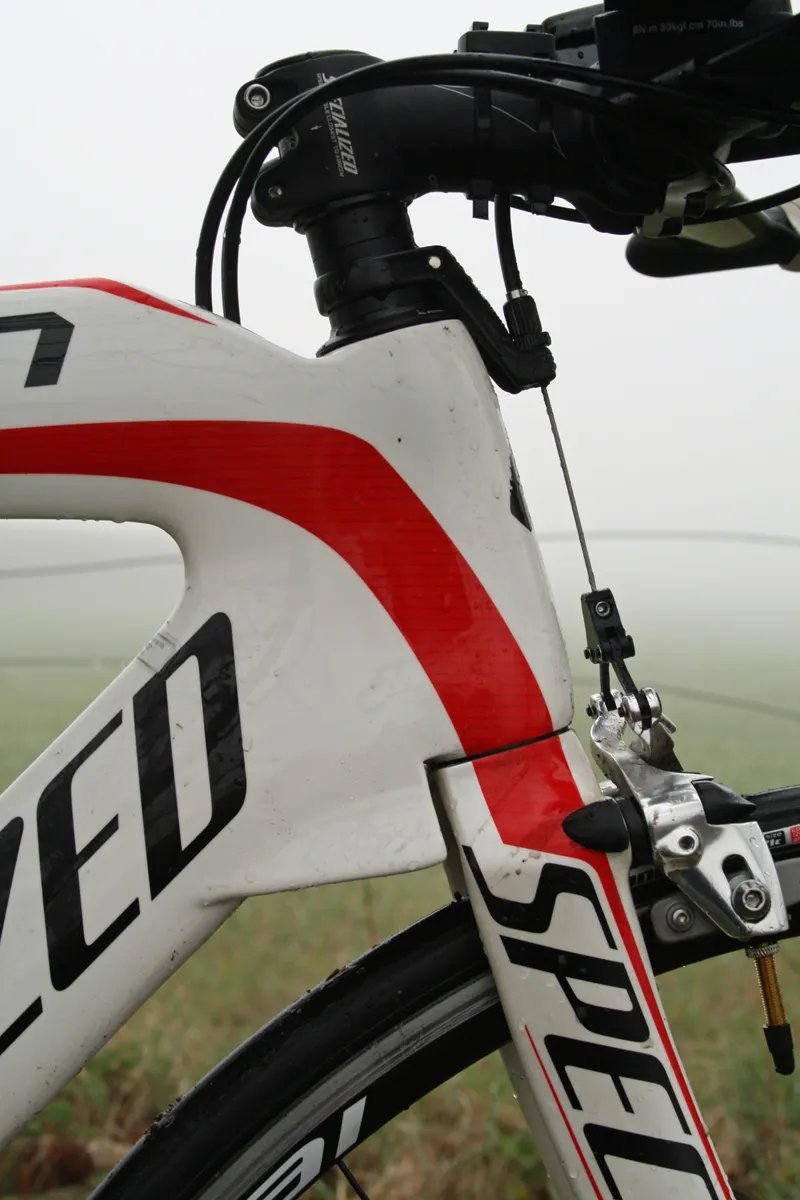
The elongated aerofoil-shaped head tube
The elongated aerofoil-shaped head tube helps the air flow smoothly around the front of the bike. Ditto the down tube, which includes a pair of wings behind the fork crown to lower drag and (according to Specialized) increase structural support in that area. The forks look like standard bladed jobs, although they have clearly been designed to work with this particular frame.
The top tube is an interesting one. Unlike most modern time trial frames, which have a level top tube, the Transition curves down to the seat tube. Specialized claim that their wind tunnel modelling showed this compact design decreased drag. But it goes beyond the scope of this review to verify that claim. It's worth pointing out, though, that the new Shiv has a flat top tube.
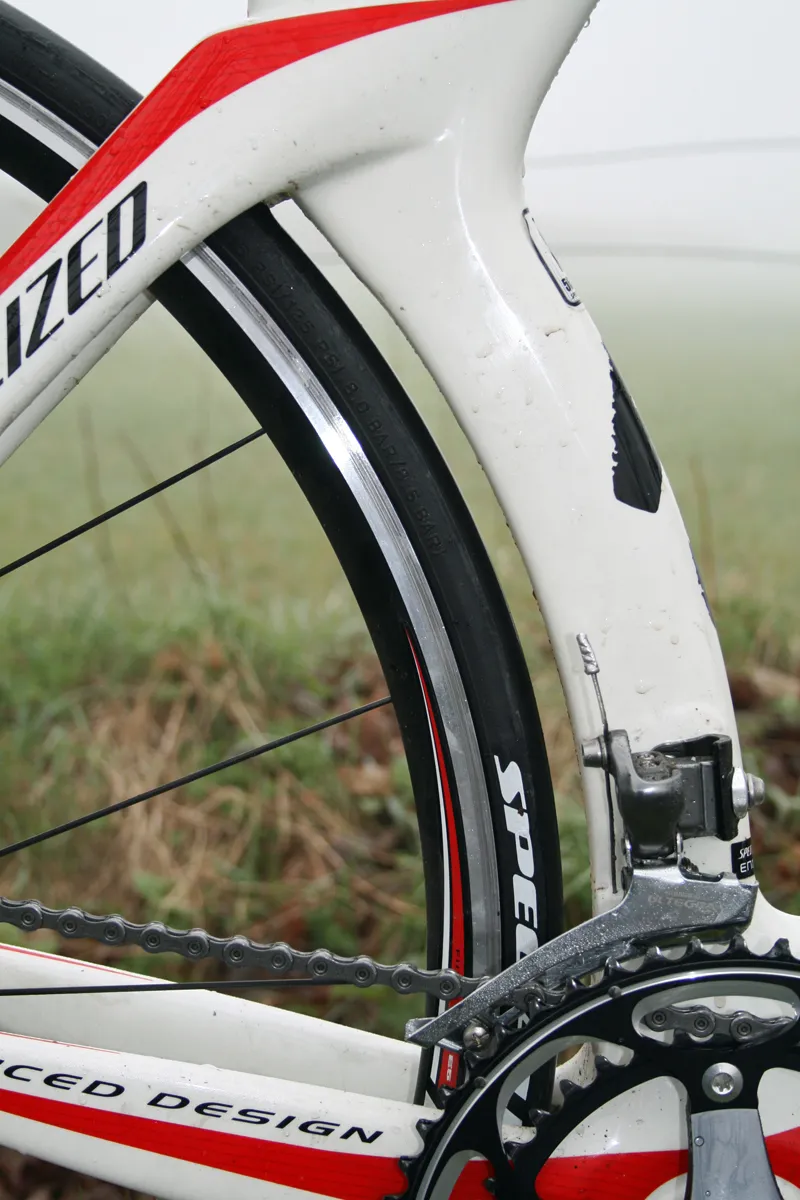
The back end has a sizeable gap betewen the tyre and frame
At the back end, the seat tube follows the curvature of the rear wheel, as is custom with time trial frames. But what is interesting is that Specialized have adopted the approach used by Look, among others, and kept a good centimetre of clearance between the rear tyre and the frame.
This is aimed at improving airflow around the rear triangle, looking at it from the point of view of the movement of the rear wheel, which is going to be pushing air back towards the seat tube. The gap between the tyre and seat tube means the air can continue to flow around the wheel, thus decreasing drag.
The other approach is to treat the whole rear triangle and wheel as a static object and minimise the gap between the wheel and seat tube. Specialized don't do this but a number of other top-end bike makers do. What's best? Again it's a job for a wind tunnel to sort out.
The vertical seatpost follows the aero teardrop theme too. That's especially important as, thanks to the compact design of the frame, there's a lot of seat post showing.
Vertical adjustment is via a 5mm hex bolt and a metal collar, which almost eliminates the chance of cracking the frame from overtightening the bolt. The seatpost has two holes at the top to give a huge amount of fore-aft saddle adjustment.
While aerodynamics are important, so is stiffness. The FACT 7rN'Aero has plenty of beef where you need it around the bottom bracket and rear triangle. Power transfer from the pedals to the road is nice and direct as a result, although the wheels do take away from this. More on that soon.
You can't get something for nothing though, and the beefiness makes for a heavy chassis – the frame alone is 1,700g (3.7lb) and the fork an extra 560g (1.2lb). This is not a frame for weight weenies.
Equipment: Everything but the wheels
The Transition Expert is generally well specced on the equipment front, with a few exceptions. The drivetrain is a mixture of Shimano Dura-Ace (shifters and rear derailleur), Ultegra (crankset, chain, front derailleur) and 105 (cassette). It's a slightly odd mix but it worked effectively and reliably, as we would expect.
We were happy with the 53/39 front chainrings, but the 11-25 rear cassette was a little wide for our liking. We really missed a 16-tooth cog and would have happily lost the 25 in favour of a 16. The jump from 17 to 15 is just too big, and we'd guess a lot of riders spend large amounts of time in these gears. Conversely, a 25-tooth cog should only be needed for the toughest of hilly courses.
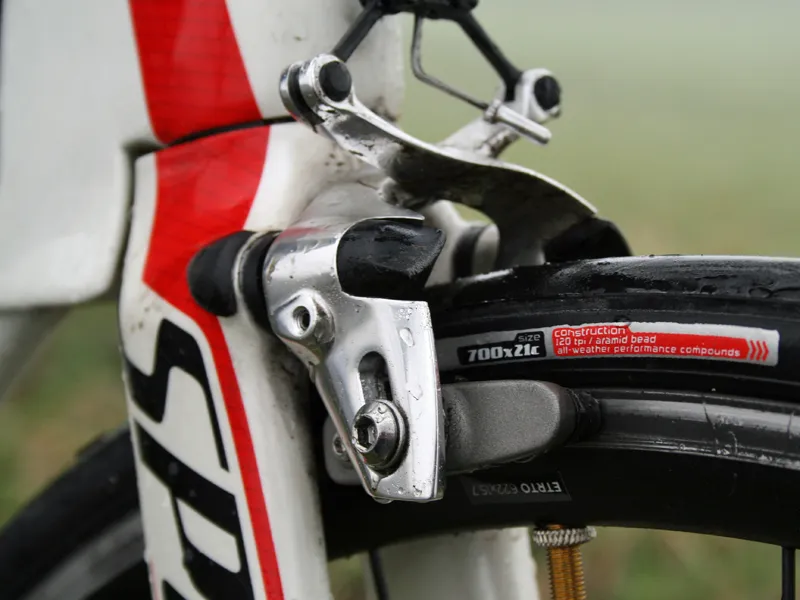
The cantilever brakes help cut down the drag
The brakes are custom to this bike. Both front and rear are centre-pull affairs and are moulded to be as aerodynamic as possible. That doesn't sound like a big deal but every little bit counts when you're making drag savings.
The front is quite tidy and is fairly easy to adjust – you change the spacing width of the pads with a thumb screw but you can also adjust each pad separately using a 2mm hex key. Stopping power doesn't feel quite as good as on a road bike (this may be due in part to the super-skinny brake levers) but for time trialling it's more than adequate.
The rear brake is mounted underneath the bottom bracket to shield it from the wind. Its location makes it trickier to adjust, although it uses the same design as the front. It's a little spongy compared to the front – no surprises there – but we barely needed it anyway.
The Transition's cockpit consists of Vision TriMax Plus SI aluminium bars and brake levers mounted on a Specialized Pro-Set 4-bolt 31.8mm alloy stem. The bars weigh a hefty 1,035g and they're one of the few areas on the bike where easy weight savings could be made – at a price, of course.
The extensions are of the R-bend variety: straight with a double-bend at halfway. They're narrowly set but only the armrests, not the bars, are adjustable for width. You'll need some extra washers for the narrowest setting, however.
The only disadvantage of these bars is that they contravene the UCI's '3:1 rule'. The base bar is more than three times deep as it is high. Also, the thickness of the base bar is less than the UCI's minimum 2.5cm. That means you'll need to be careful about which events you race in and whose technical rules they adopt.
The Vision brake levers are designed to be almost invisible to the wind – they're about as thin as you can get without them cutting your fingers. But they do the job and it's a nice psychological boost to know your levers aren't adding much to your frontal area.
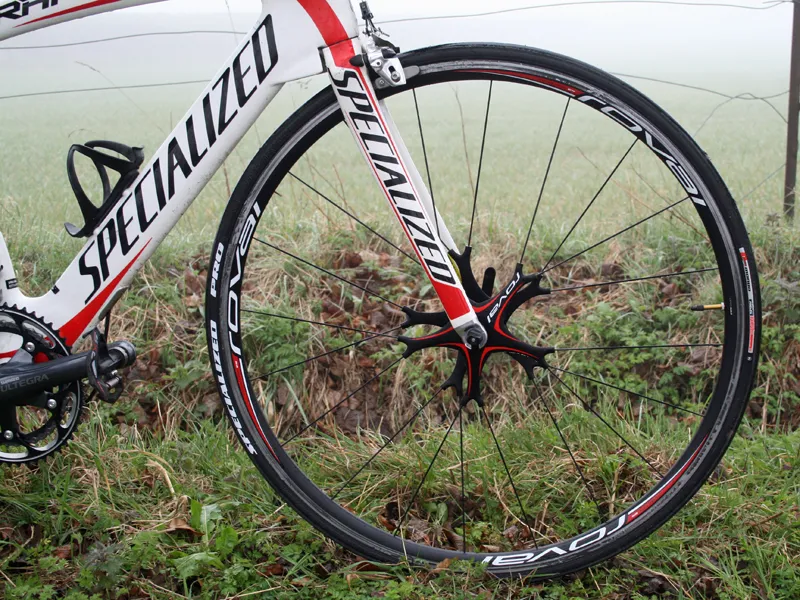
The Roval Fusee Star wheels were too flexy for our liking
It's not all good though. The Roval Fusee Star wheels are the biggest disappointment on this otherwise excellent machine. Roval's distinctive starfish-shaped narrow flange hubs coupled to low-profile 20-hole alloy rims are designed to be aerodynamic and stiff, but they don't live up to expectations.
They're more aero than a bog standard set of spoked wheels, but swapping them out for a deep section front and rear (or rear disk) made a significant difference. So much so that we were reluctant to use the Rovals in a race. We're talking tens of seconds over 10 miles – not something that you want to give away.
The Rovals are OK-ish as training wheels but then another problem becomes apparent: the narrow, high flanges and low spoke count (20 per wheel) mean that the rear is subject to a lot of lateral flex (there's no problem with the front).
Get out of the saddle and it rubs against the brake blocks, even when they're set wide apart. If you're on a hilly course, this will do your head in. Especially combined with their hefty weight – 1,767g (788g front, 979g rear).
It doesn't appear to be frame flex because there is no such issue with a disk or a stiffer rear wheel, such as a Mavic Aksium. It's a shame because wider flanges on the rear would likely solve the problem with no substantial weight or aero costs.
But there is good news for those looking at 2010 models of the Transition Expert. Specialized told us that the wheels will be changed to Mavic Cosmic Elites, which have a reputation of being both stiff and aero. That will add $200 to the price though.
The wheels were fitted with Specialized Mondo 21mm clinchers. These are good racing tyres: they roll well and grip well. The narrow 21mm profile is presumably to reduce aero drag, although this is wheel and wind dependent. This is all well and good but we found ourselves backing off more before corners in wet and muddy conditions.
Finally, Specialized also provide the perch in the form of their TriTip SL40 Gel saddle. It features a 50mm-wide bulbous nose and a cut-out centre for extra comfort. It's not bad up to two hours but over longer distances our undercarriage suffered a little. This is one area you might want to play with if you're going to use this bike for longer events.
